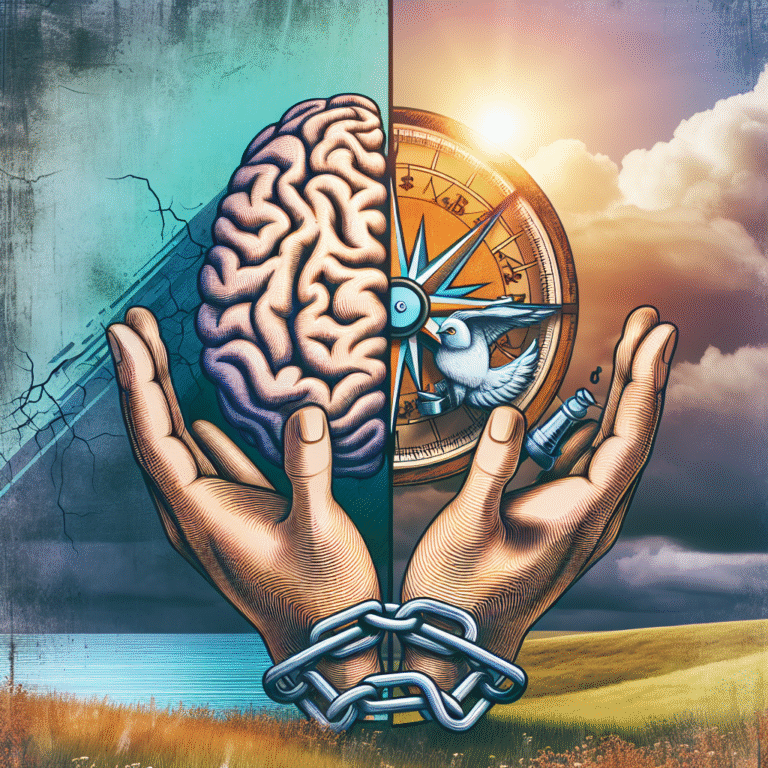Introduction
In a world increasingly aware of mental health, understanding the nuances of trauma is paramount. Trauma shapes lives, sometimes in subtle ways, often overlooked in traditional assessments. The Importance of Trauma Assessment in Mental Health: Getting it Right serves not only as a guiding principle for mental health professionals but also as a vital message for anyone navigating the complexities of their psychological well-being. Recognizing trauma’s profound impact transforms the approach to mental health care, ensuring that healing starts from a place of informed understanding.
Defining Trauma Assessment
Before delving into methodologies, it’s crucial to define trauma assessment. This process involves evaluating an individual’s experiences, behaviors, and emotional responses to traumatic events. Trauma can stem from various sources—violence, abuse, accidents, or natural disasters. Proper assessment can lead to more tailored and effective treatment strategies.
The Underlying Impact of Trauma
Understanding Trauma Responses
The human brain, when faced with trauma, enters a survival mode. This can manifest in various symptoms, such as anxiety, depression, or PTSD. Understanding these responses is critical in connecting patients with appropriate resources.
Case Study: Sarah’s Journey
Sarah, a 34-year-old woman who experienced childhood abuse, illustrates the importance of assessing trauma correctly. Initially misdiagnosed with generalized anxiety disorder, her treatment was ineffective until a thorough trauma assessment revealed her history. With this knowledge, her therapist adopted trauma-informed care, leading to significant improvements.
Analysis of Sarah’s Case
Sarah’s experience underscores that without a trauma assessment, the root cause of psychological distress remains unaddressed. This not only prolongs suffering but can also lead to destructive coping mechanisms.
The Assessment Process: Getting It Right
Key Components of Trauma Assessment
- Patient Interviews: Open conversations help build trust and uncover hidden experiences.
- Standardized Tools: Using validated questionnaires like the PTSD Checklist for DSM-5 (PCL-5) ensures comprehensive data collection.
- Observational Techniques: Noticing behavioral changes during sessions can provide insight into unresolved trauma.
How Trauma Assessment Influences Treatment Plans
Trauma assessments guide treatment options ranging from cognitive-behavioral therapy (CBT) to eye movement desensitization and reprocessing (EMDR). By accurately pinpointing trauma history, treatments can be customized, enhancing efficacy.
Case Study: Marcus’s Experience with PTSD
Marcus, a veteran diagnosed with PTSD, underwent a thorough trauma assessment. The evaluation highlighted multiple traumas rather than a single event. A tailored therapeutic approach utilizing EMDR enabled him to confront and process his experiences effectively, making significant strides in his recovery.
Analysis of Marcus’s Case
Marcus’s recovery illustrates how trauma assessment can unearth layers of complexity in an individual’s history. Timely and precise assessment is essential for creating effective interventions, paving the way for genuine healing.
The Role of Training for Mental Health Professionals
Importance of Specialized Training
Professionals equipped with trauma-informed training can detect signs of trauma beyond conventional methods. This training emphasizes the importance of safety, trustworthiness, and transparency, factors critical in the therapeutic environment.
Impact of Cross-Disciplinary Approaches
Collaborations between psychologists, social workers, and medical professionals ensure a holistic approach. Trauma affects not just mental health but physical well-being too. Integrating insights from diverse fields can enhance assessment processes.
Case Study: A Multidisciplinary Approach
In a recent case, a child experiencing emotional dysregulation was assessed using a collaborative approach involving educators, psychologists, and pediatricians. This comprehensive assessment revealed a history of contextual trauma connected to family dynamics, leading to targeted interventions that were effective and nurturing.
Analysis of the Multidisciplinary Case
This case showcases the effectiveness of a team-oriented approach in trauma assessment. By pooling resources and insights, the team was able to address the child’s issues from multiple angles, allowing for richer understanding and treatment.
Challenges in Trauma Assessment
Social Stigma and Awareness
The societal stigma surrounding mental health can act as a barrier, preventing individuals from seeking assessment. It’s essential to promote an environment where conversations about mental health and trauma are normalized.
Accessibility of Resources
In many regions, access to qualified mental health professionals who specialize in trauma is limited. Advocacy for policy changes can improve availability and training, bridging the gap in mental health care services.
The Importance of Trauma Assessment in Special Populations
Children and Adolescents
Children often express trauma differently than adults. Specialized assessments that account for developmental stages are crucial, ensuring that young individuals receive appropriate care.
Minority Groups
Cultural context is vital in trauma assessment. Understanding unique experiences and societal strains faced by minority groups helps tailor assessments to be more relevant and effective.
Case Study: Assessment in a Cultural Context
A recent study focused on immigrant families highlighted the distinct traumas related to displacement and acculturation. Tailored assessments that incorporated cultural sensitivity led to better engagement and outcomes in therapy.
Analysis of the Cultural Context Case
This underscores the critical importance of context in trauma assessment. When therapists accommodate cultural nuances, they foster trust and enhance their ability to address the specific needs of their clients.
Conclusion
The importance of trauma assessment in mental health cannot be overstated. Properly identifying trauma leads to effective treatment, empowers individuals, and facilitates healing. For mental health providers, prioritizing trauma assessment is not merely a best practice—it is the foundation of effective care.
By embracing a tailored, trauma-informed approach, we create pathways for recovery and resilience. Remember, assessing trauma correctly means addressing the entirety of a person’s experiences and emotional landscape. The work begins with understanding, and that understanding can change lives.
FAQs
1. What is trauma assessment?
Trauma assessment is the process of evaluating one’s psychological and emotional responses following traumatic experiences. It often involves interviews, standardized tools, and observational techniques.
2. Why is trauma assessment important?
It provides essential insights into a patient’s history, enabling tailored treatment strategies that address the root causes of their mental health challenges.
3. How does trauma affect mental health?
Trauma can lead to various mental health issues, including anxiety, depression, PTSD, and more, profoundly affecting an individual’s emotional and psychological well-being.
4. What are common tools used in trauma assessment?
Common tools include the PTSD Checklist for DSM-5 (PCL-5), the Adverse Childhood Experiences (ACE) questionnaire, and various observational assessment methods.
5. How can I find a mental health professional trained in trauma assessment?
Seek referrals from healthcare providers or look for professionals with specialized trauma training certifications through organizations like the International Society for Traumatic Stress Studies.
By integrating the understanding of trauma into mental health care, we can work together to create a society where healing and recovery are not just possible but are the standard.













